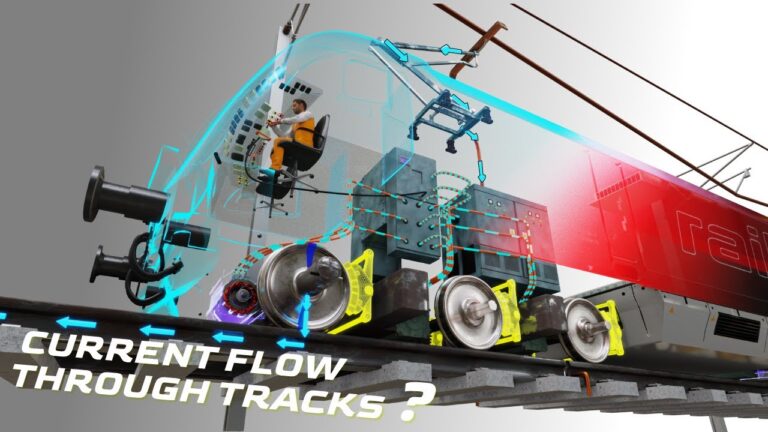This Post contains Videos and Information on Electric Locomotives, Working of Electric Locomotives and Engineering Secrets behind Electric Trains
What is an Electric Locomotive ?
Based on Public Facts
An electric locomotive is a locomotive powered by electricity from overhead lines, a third rail or on-board energy storage such as a battery or a supercapacitor. Locomotives with on-board fueled prime movers, such as diesel engines or gas turbines, are classed as diesel-electric or gas turbine-electric and not as electric locomotives, because the electric generator/motor combination serves only as a power transmission system.
Benefits of Electric Locomotives
Electric locomotives benefit from the high efficiency of electric motors, often above 90% (not including the inefficiency of generating the electricity). Additional efficiency can be gained from regenerative braking, which allows kinetic energy to be recovered during braking to put power back on the line. Newer electric locomotives use AC motor-inverter drive systems that provide for regenerative braking.
Learn about the engineering secrets behind the Electric Trains
It might be surprising to know that in electric trains, the power collected from the overhead lines ends up in the grounding cable of the track after flowing through the wheels. Three phase power conversion, regenerative braking and zig-zag overhead lines – all these make electric train technology quite unique.
Lesics
Electric Locomotives vs Diesel Locomotives
Electric locomotives are quiet compared to diesel locomotives since there is no engine and exhaust noise and less mechanical noise. The lack of reciprocating parts means electric locomotives are easier on the track, reducing track maintenance. Power plant capacity is far greater than any individual locomotive uses, so electric locomotives can have a higher power output than diesel locomotives and they can produce even higher short-term surge power for fast acceleration.
Learn How Does Electric Locomotive Work ?
Energy Efficiency of Electric Locomotives
Electric locomotives are ideal for commuter rail service with frequent stops. Electric locomotives are used on freight routes with consistently high traffic volumes, or in areas with advanced rail networks. Power plants, even if they burn fossil fuels, are far cleaner than mobile sources such as locomotive engines. The power can also come from low-carbon or renewable sources, including geothermal power, hydroelectric power, biomass, solar power, nuclear power and wind turbines.
Cost Efficiency of Electric Locomotives
Electric locomotives usually cost 20% less than diesel locomotives, their maintenance costs are 25-35% lower, and cost up to 50% less to run. The chief disadvantage of electrification is the high cost for infrastructure: overhead lines or third rail, substations, and control systems.


